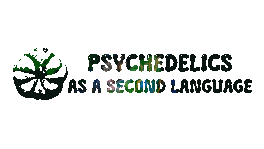The future of 5-MeO-DMT
A story of herpetological extinction, synthetics, and genome editing.
In the year 1983 an author going by the name of Albert Most, later to be identified in a journalistic hunt leaded by the journalist, scientific researcher Hamilton Morris, as Ken Nelson, an anti-nuclear activist, artist, and independent researcher, published the Pamphlet Bufo Alvarius: The Psychedelic Toad of the Sonoran Desert, complemented by his own merchandise, including the creation of The Church of the Toad of Light.
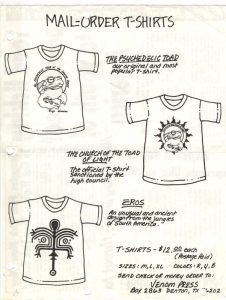
Ken read an article in the August 1981 issue of Omni magazine, presenting the work of the anthropologist Dr.Jeanne Runquist about ancient psychedelics used in Cherokee ceremonials, including thousands of toad bones found in a Cherokee excavation site in North Carolina. Ken’s fascination with the possibility of a psychedelic toad, made him pursue the toad, his dog Quanah, first spotted toad. Ken immediately went after it, squirting the glands containing the toad’s venom into the windshield of his van, dried it, and smoked it, this experiment was the first known report of a Bufo Alvarius trip, described in his Pamphlet.
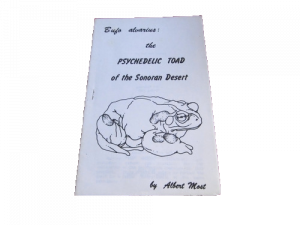
Excerpt of the Bufo Alvarius: The Psychedelic Toad of the Sonoran Desert:
“You will be completely absorbed in a complex chemical event characterized by an overload of thoughts and perception, brief collapse of the EGO, and loss of the space-time continuum.”
Incilius alvarius, formerly known as Bufo Alvarius, is a nocturnal species that remain in underground tunnels during the day in order to escape the extreme temperatures from the desert. At the dusk, the toads leave their tunnels and congregate in wet areas, near springs and streams, in fields irrigated for agriculture or temporary pools left by heavy rains. Their breeding season ranges from May to July, where most activity is found, the toads require a minimum of three inches to reach their sexual maturity, although adults continue to grow up to seven inches in length.
Identifying Incilius Alvarius should be rather easy as they are the largest species in North America, they have a particular unique stout, squat body and a flat broad head, their skin is leathery, covered with orange warts that can change from a dark brown to grayish green, and their bellies are cream-colored. However, their main characteristic is their large granular glands on the neck and limbs where their venom is stored in order to protect themselves from predators. The most prominent of these kidney-shaped glands are located in their necks behind the tympanum, and the enlarged and elongated glands named femorals and similarly the tibeals, in addition, a gland can also be found on each forearm.
Each of these glands consist of various oval lobules about two millimeters in diameter. Each lobule is an individual unit that emerges onto the skin as a single pore. Each lobule is surrounded by a double cell layer with the function of synthesizing a viscous milky venom.
The venom of the toad is a peculiar constant spectrum of biogenic amines, the biosynthesis of these amines is accomplished by a genetically regulated enzyme. This unique metabolic pathway is unique in the Animal Kingdom, making this toad the only species being able to produce large amounts of 5-methoxy indole derivatives, being the most predominant alkaloid, 5-methoxy-N, N-dimethyltryptamine, 5-MeO-DMT for short.
Ken’s love and preoccupation of the toad being abused or mishandled, and for the extinction of the species, made his research going for a way to create a way to produce 5-MeO-DMT without using toads.
The attention of the toad would be reignited with arrest of Bob Shepard and his wife who taught about various species of reptiles and amphibians in 1994, after being accused of giving drugs to children, further being claimed by the media that a toad cult had started and he was the Toad Guru. Since the toads weren’t considered illegal, the professor was charged with the possession of Bufotenine, however, after the forensic analysis of the Toad’s Venom no Bufotenine was found, the present chemical was, in fact, 5-MeO-DMT, which was yet to become illegal and the charges against Bob Shepard were dropped, despite the dropped charges, the media didn’t give that information and kept propagating news regarding the new cult, created more awareness of the Incilius Alvarius Toad.

People began searching for the toad themselves, shamans began doing healings for several diseases, and poachers began hunting the toad. This lead to an increased movement surrounding the deserts and small villages in Sonora, unfortunately, this increase in movement surrounding the area, lead to the toad’s biggest predator, the automobile.
Generally, as cars pass by, their source of feeding, insects, are attracted to the headlights, therefore, the toads seek their source of food, as the toads are hunting for their preys and are often blinded by the headlights of the vehicles and end up being run over, this event, in addition of poachers who often take these toads from their habitat and don’t give them the right conditions, have become factors of extinction of the species, residents of Sonora and Shamans are often preoccupied with the lack of toads present in their only natural habitat the Sonoran Desert.
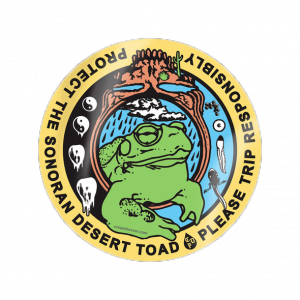
This being a real Herpetological problem, not only for the Sonora Habitant but for all the members of the Psychedelic Society, Curanderos, Herpetologists, Scientists, Patients and of course, a global problem, as we are speaking about the extinction of a species, several attempts of making a solution to stop poaching have been made including, WBAC, World Incilius Alvarius Congress, in 2019 which started the Protect the Sonoran Desert Toad movement and raised one of the possible solutions to help the species, the use of Synthetic 5-MeO-DMT, in this congress the possibility of switching the Incilius Alvarius venom to a synthetic version, including presenting the full synthesis starting from 5-Methoxytryptamine.
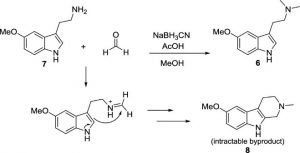
Today as the psychedelic Renaissance hits globally, several of these substances have become popularized or a go-to, especially when we have several celebrities such as Mike Tyson giving the public information of how much smoking the toads venom has helped with their depression, indeed the Toad hasn’t escaped the exception.
Although most of the lamen find the situation rather awkward or sinister and despite the various misinformation by the media where the use of the toad would be licked instead of having his venom squirted into a glass, scraped, and then smoked, the psychedelic society and patients who are looking for a cure to their depression or PTSD, find this a runaway from their problem and consider it to be a solution.
Just as DMT, its methoxylated derivative 5-MeO-DMT is a highly potent and short-effect substance used with dosages ranging from:
Synthetic:
- Small: 3-6 mcg
- Medium: 6-10 mcg
- Large: 11-15+ mcg
Toad:
- Small: 10-20 mcg
- Medium: 20-40 mcg
- Large: 40-60+ mcg
Once 5-MeO-DMT enters one’s body it works primarily as a serotonin receptor agonist, the receptor responsible for regulating the mood and sense of wellbeing. The compound has a high affinity to the 5-HT1A receptor and just like classic psychedelics, the substance binds to the 5-HT2A receptor, hence the hallucinatory effects. There is also evidence that the compound has effect on cell surface and extracellular proteins involved in the regulation of synaptic architecture, like plexins, metalloproteinase and integrins. Such observations can be found in patients with major depression who present good response to antidepressants.
The studies were conducted in a group of 42 healthy men and women from the ages 25 to 55, subjects will be given single doses of 5-MeO-DMT or a placebo as a nasal spray. Since the substance has never been in clinical trials the dosage will be slowly increased through the process. The company aims to find the side effects of the compound, the blood levels, psychedelic effects and the effects in the mood, feelings and ability to read facial expressions.
However, the synthetic version of the plant isn’t fully a solution, when questioned, shamans, and some naturalists prefer the Toad or are against the use of synthetics, for the same reason, the use of Genetic modification tools CRISPR, might be a plausible solution to meet both sides.
In a conversation with the director of Egret Bioscience, Phillipe Henry, and the founder of Lighthouse Genomics ,Timothy Harvey, the possibility of decoding and editing the genetics of the Incilius Alvarius toad to protect the species was brought up together with their collaboration project @alvarius.research.
With the aid of genomic analysis, mapping the distribution of the genetic diversity of the species across its range is possible, enabling the team to reveal the possibility of toad populations that may hold rare diversity within the species. These results can be obtained with a well-conducted genomic investigation into the population structure across its range giving us the conservation priorities for the species.
According to Timothy Harvey, it’s possible to anticipate that populations of toads at the periphery of the range, for example, near Janos, Chihuahua, which represents the limits of survivability, may be genetically distinct from populations in the core of the range along the Gila River. There may be numerous other genetically distinct subpopulations, all of which are important to maintaining, as any once could hold the key to the survival of the species – or for that matter, medicinal potency.
Research may reveal certain branches of the species phylogeny to be at risk. If so, a captive breeding program, preferably started from captured tadpoles, rather than captured adult toads, could offer a method of to preserve these genetics until effective conservation measures are put in place to protect the toads in the geographic location in question.
-Timothy Harvey
By editing the genomes of the species using tools such as CRISPR the team believes in the positive impact of the conservation of the toad on threatened biota by reducing anthropogenic pressures.
This being said, certain questions might be formulated about the Natural vs Synthetic 5-MeO-DMT war, where would this category lay in?
The reproduction of toad cells will become a Biosynthetic addition in the Natural vs Synthetic war, the product will be viewed differently from the toad harvested secretions or synthetic/semisynthetic meeting middle-of-the-road product. However, is much better suited to large-scale, highly standardized production, compared to the toad-derived, full-spectrum, organic, artisanal preparations that simply cannot scale up to commercial production Phillipe said.
In addition a properly cared for and ethically harvested toads are a possibility (as attested by our partner Alvarius Research Inc’s captive program). Research highlighting key differences between sources of 5-MeO-DMT and composition is currently lacking. Such studies will yield valuable information and rational for choosing synthetic vs naturally derived products for future trials
What is the yield predicted to obtain using these methods?
“We have built a consortium of collaborators that have developed IP to enable ex situ conservation of live specimens as the source for dried secretions and amphibian cell cultures. While harvesting and studying the chemical composition of the captive toads, we have begun the process of eliciting 5-Meo-DMT production in cell culture flasks. Our long term goal is to optimize, increase and automate toad cell culture based 5-Meo-DMT production through a unique bioreactor platform. This novel biosynthetic product will replicate the chemical fingerprint of the toad secretions to an extent not feasible using synthetic means.
We believe that it is reasonable to expect a dry content of elicited cell cultures be at 15-30% tryptamine, 95% of which is expected to be 5-Meo-DMT, and is expected to be dependent on the source of the cell culture (which individual, population, age, sex etc of the donor toad).
We are exploring the use of plant cell culture models for 5-Meo-DMT production, but the toad model appears much more promising from a production efficiency point of view.
When it comes to modify the genetics of the toad so they can produce more alkaloids, isn’t the project’s current focus instead, rather we are interested in understanding the biosynthetic pathways leading to high accumulation in the paratoid glands, and we will look to leverage that information to improve our biosynthetic platform, or perhaps in the future to contribute to a GE/NBT project using microorganisms such as yeast, E.coli or other microorganism.”
-Phillipe Henry
The toads are currently being bred with constant updates posted on the @alvarius.research on Instagram, in a custom-built 70 cubic-foot enclosure with various elevations, water features and a heated cave. They have an outdoor pond habitat for the warmer months of summer.

“At Alvarius Research, our indoor enclosure. Indoors, we continually rearrange the rocks, wood, moss and sand features to provide them lots of stimulation to explore, hunt and hide out. The toads are happiest doing three things in life: hunting, meditation, and bath time. Our goal is to add “lovemaking” to that list. We’ll do all we can to producing some tadpoles this summer. This means providing some hibernation followed by a simulated a rainy season at the pond, and hoping the magic happens. Having a good supply of tadpoles and developing young toads will help with some of the non-invasive genomic and cell culture research we’re involved with. Success at breeding will indicate that we have kept them healthy and content. I’m also convinced that happy toads produce the best medicine”
-Timothy Harvey
The toads are carnivores and eat three big meals and one snack per day, since variety is important in the diet of the species, their meals are based on the rodents, earthworms, red wigglers, crickets and small beetles raised and collected by the team.
“They are carnivores who only eat live, moving food. Their toes twitch when they’re on the hunt.”
-Timothy Harvey
According to Timothy, each toad has a distinct personality, our largest male enjoys holding his breath underwater for over five minutes at a time.

When asked about the Incilius Alvarius breeders and how breeders may help the repopulation of the species Philippe believes that the species conservation status is “least concern” in most of its native range. Ex situ conservation efforts do have the potential to be a source of genetic variation to repopulate the wild, but this is not a necessity at this point in time.”
Don’t believe it when a pet store website tells you that a 20-gallon enclosure is sufficient. Familiarize yourself with official standards set by professionals in the field of animal research, such as the Canadian Council for Animal Care.
-Timothy Harvey
In conclusion the team is projecting to expand in other amphibian cell culture in the future, amphibians such as Phyllomedusa Bicolor which have been recently sought for its spiritual effects.
Projects such as Alvarius Research together with the Protect the Sonoran Desert Toad movement are currently raising awareness as well as aiming to provide a better future for the species, providing us with alternatives to the toad venom, consequently reducing the harm caused to the species granting us a better future for Incilius Alvarius and 5-MeO-DMT.
Support the conservation of Incillius Alvarius and this project by donating:
ting:
https://www.gofundme.com/f/science-to-protect-the-sacred-toad
References:
Bufo Alvarius: The Psychedelic Toad of the Sonoran Desert- Albert Most/Ken Nelson
